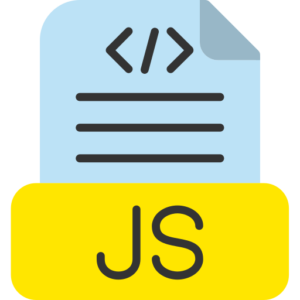The event loop and call stack
Event loop and call stack in JavaScript programming are equal programming concepts, Event loop and call stack in JavaScript are used when programmers need to create and manage asynchronous code in JavaScript programming.

So, let’s understand event loop and call stack in JavaScript programming better.
Call Stack in JavaScript.
Call stack in JavaScript programming is a stack data structure preview method that tracks program execution references running in a JavaScript program. When a function is called in the current program, it creates a new program call execution reference in the call stack, and this reference is added to the top of the program call stack. When the current program function execution terminates, automatically this program execution reference is popped from the call stack.
How call stack works in JavaScript.
When a function call is moved to the call stack position in a program.
So the program moves in the front direction from the most recently added function at the top of the execution stack.
When a program call stack function completes its execution, it is moved to the pop direction from the call stack order.
If there is no other function pending to execute in the current call stack order, then the call stack becomes empty, and the program terminates the call stack execution step.
Call Stack Program JavaScript Example.
function numberone() {
console.log(‘this is a number one call stack element’);
}
function numbertwo() {
console.log(‘this is a number two call stack element’);
}
numberone(); // here numberne() is pushed onto the call stack
numbertwo(); // here numbertwo() is pushed onto the call stack
Here in this example.
- When numberone() is called in the program call stack, and it is moved forward in the call stack order, then it is executed in the current program.
- As soon as numberone() call stack process terminates, it is moved to the pop direction from the stack order.
- Similarly, then, numbertwo() is called in the call stack, and it is moved in the stack order, and it executes and terminates.
Event Loop in JavaScript.
The event loop in a JavaScript program is responsible for executing the code, collecting program events and then processing it, and executing sub-tasks in JavaScript such as asynchronous callbacks and promises.
How does the event loop work in JavaScript.
- A code in a JavaScript program runs in synchronous order by default, which means the program code is executed step by step, line by line.
- But, when the program encounters asynchronous operations such as setTimeout, promises, or I/O tasks, they are offloaded to other environments such as Web API or Node.js API.
- After an asynchronous task in the current JavaScript program completes, the callback or promise handler is added to the callback queue, also known as the message queue.
- The event loop continuously monitors the call stack and the callback queue.
- If the call stack is empty, the event loop will move the first task from the callback queue to the call stack for execution.
- The event loop ensures that the program asynchronous code does not disturb the execution of synchronous code and allows the JavaScript program to manage and control multiple tasks simultaneously.
Let’s take a look at how this work together.
- When you run a synchronous function in a JavaScript program, it adds that function to the call stack, and it is executed properly.
- If an asynchronous operation is performed in the program, e.g., setTimeout()), the event loop moves that program task operation to the Web API. For example, the program is waiting for a timer etc.
- Once the timer or asynchronous operation task in the current program is completed, this callback is moved to the callback queue order.
- Here the event loop checks whether the call stack is empty or not. If the call stack is empty, it moves the callback process from the queue to the call stack, where it will be executed later.
Example with asynchronous code in JavaScript.
console.log(“began”);
setTimeout(function() {
console.log(“Time out”);
}, 0);
console.log(“terminate”);
Here in this example above.
- Here in this program “began” is logged immediately as a part of synchronous execution.
- Where setTimeout() function call is an asynchronous program operation. It moves it to the web API, where it waits for a particular timeout of 0ms.
- Here “terminate” is logged as this synchronous code continues the program execution process without waiting for setTimeout.
- When the synchronous code in the current program terminates, and the call stack becomes empty, the callback from setTimeout is moved from the callback queue to the call stack, and the system “timeout” is also logged.
Call Stack vs Event Loop in JavaScript Programming Conclusion.
The call stack in JavaScript programs controls and manages the synchronous execution of code.
Whereas the event loop manages asynchronous tasks by transferring them from the callback queue to the call stack when it becomes empty.



















































